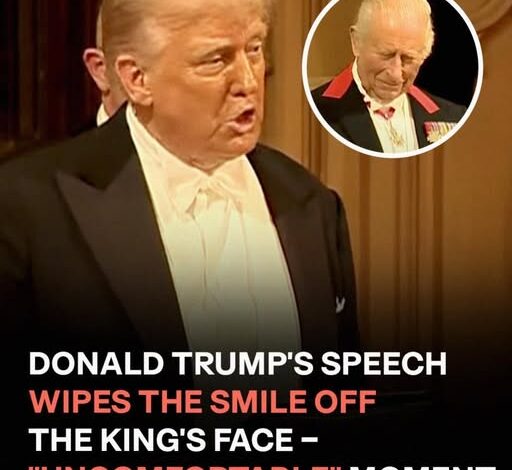Trump’s Speech at Windsor: Praise, Omissions, and Subtle Tensions

What was meant to be a night of pageantry and poise at Windsor Castle turned into a subtle display of tension as President Donald Trump addressed British royalty. While some praised his speech, others focused on what he omitted and on the reactions of the royals.
On Wednesday, September 17, President Trump delivered a ceremonial speech during a state banquet at St George’s Hall, Windsor Castle, in front of 160 guests. Standing before King Charles III, Queen Camilla, Prince William, and Princess Kate, Trump combined historical references with personal praise, calling the invitation “one of the highest honors” of his life.
He expressed gratitude to the hosts: “Your Majesty, Melania and I are deeply grateful to you and Queen Camilla for your extraordinary graciousness. And to William and Kate, thank you so much. It’s been so great being with you today.” Trump then lauded King Charles for his environmental and cultural efforts, crediting him with restoring Britain’s natural beauty and heritage. He joked about the King greeting nearly 150 people by name earlier in the day, noting some had “bad names,” leaving the audience unsure whether to laugh or wince.
Trump referenced Charles’s 1993 letter expressing his desire “to put the great back into Great Britain” and praised the King’s dedication, calling it an “amazing calling.” He highlighted Britain’s global cultural influence, mentioning literary icons such as Shakespeare, Dickens, Tolkien, and Orwell, and connected the nation’s legacy—including the Magna Carta and scientific achievements—to the foundations of law and liberty in the United States. “The British Empire laid the foundations of law, liberty, free speech, and individual rights everywhere the Union Jack has flown — including America,” he said.
The President toasted the “special relationship” between the two nations, describing them as “two notes in one chord or two verses of the same poem,” and concluded by honoring King Charles and Queen Camilla while emphasizing the enduring friendship between Britain and the U.S.
Trump also complimented Prince William and Princess Kate, calling William “a remarkable son” and praising Kate as “radiant, healthy, and beautiful.” Notably, he did not mention Prince Harry or Meghan Markle, an omission that sparked widespread speculation and debate online.
Social media quickly reacted to both the speech and the subtle responses of the royals. Observers noted that King Charles appeared occasionally uncomfortable, while Queen Camilla’s side-eye at Kate drew attention. Comments ranged from amused to serious, with many interpreting facial expressions as conveying meaning beyond the formal ceremony.
Body language expert Judi James observed that, despite protocol missteps, King Charles showed warmth and deference. She highlighted moments where Charles seemed anxious, akin to a parent awaiting a guest’s arrival, and noted Camilla’s subtle correction when the King left the Queen and First Lady behind during introductions. James suggested that Charles’s gestures indicated approval of Trump, even when tradition was bent. Another expert, Inbaal Honigman, remarked that the King appeared uneasy at times, especially during a troop inspection, but quickly recovered and offered reassuring touches to Trump.
Throughout the visit, small gestures and nuanced interactions revealed more than the formal ceremony. Prince William’s simple introduction of his father to Trump, the warm handshake, and the carriage procession were closely observed. Ultimately, it was these subtle signals — the expressions, gestures, and moments of protocol — that captivated viewers and dominated online discussions long after the state banquet concluded.